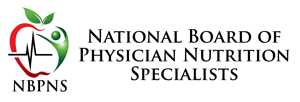Neonatal
Textbooks and chapters
- Hay WW. Nutrition and development of the fetus: Carbohydrate and lipid metabolism. In: Walker WA, Watkins JB. Nutrition in Pediatrics . Basic Science and Clinical Applications; 2 nd Ed. BC Decker Inc, Hamilton, Ontario, 1997. Comprehensive chapter outlining fetal and placental utilization and metabolism of lipid and carbohydrate.
- Anderson AH, Battaglia FC. Placenta function and control of nutrition in utero. In: Walker WA, Watkins JB. Nutrition in Pediatrics . Basic Science and Clinical Applications; 2 nd Ed. BC Decker Inc, Hamilton, Ontario, 1997. A thorough review of amino acid and protein nutrition and metabolism during fetal life.
- Schanler RJ. The low-birth weight infant. In: Walker WA, Watkins JB. Nutrition in Pediatrics. Basic Science and Clinical Applications; 2 nd Ed. BC Decker Inc, Hamilton, Ontario, 1997. This chapter discusses the unique nutritional needs of preterm infants as it relates to macronutrients and micronutrients in the context of both parenteral and enteral nutrition support.
Review Articles
- Atkinson SA. Human milk feeding of the micropremie. Clin Perinatol. Mar 2000; 27(1):235-47. This article examines the use of human milk for low birth weight and very low birth weight infants, discussing the benefits and possible supplemental nutrient needs.
- Newell SJ. Enteral feeding of the mircropremie. Clin Perinatol. Mar 2000; 27(1):221-34. This review discusses enteral feeding decisions for premature infants in light of current clinical and physiologic evidence.
- Thureen PJ, Hay WW. Intravenous nutrition and postnatal growth of the micropremie. Clin Perinatol. Mar 2000;27(1):197-219. The authors outline the short and long term implications of early nutrition practices in the extremely low birth weight infant population.
Original reports
- Schanler, RJ. Feeding Strategies for Premature Infants: Randomized Trial of Gastrointestinal Priming and Tube-feeding Method. Pediatrics , 103(2): 434-39, Feb. 1999. A randomized clinical trial examining time required for infants to attain full oral feeding by comparing the presence or absence of gastrointestinal priming and continuous infusion versus intermittent bolus tube-feeding. `
- Schanler, RJ. Feeding Strategies for Premature Infants: Beneficial Outcomes of Feeding Fortified Human Milk versus Preterm Formula. Pediatrics , 103(6): 1150-57. June 1999. Report describing the growth, nutritional status, feeding tolerance, and health of participating premature infants who were fed fortified human milk in comparison with those who were fed exclusively preterm formula.
- Reis, BB. Enhanced Growth of Preterm Infants Fed a New Powdered Human Milk Fortifier: A Randomized, Controlled Trial. Pediatrics, 106(3): 581-588. Sept. 2000. A prospective, double-blind, randomized, controlled trial evaluating the growth and nutritional status of preterm infants receiving preterm human milk supplemented with a newly formulated powdered human milk fortifier, study fortifier, or a powdered commercial human milk fortifier.
Seminal papers
- American Academy of Pediatrics, Committee on Nutrition. Nutritional Needs of low birth-weight infants. Pediatrics; 75:976-986, 1985. A thorough report on the special nutritional needs of premature infants.
Web sites
Clinical algorithms, practice standards, position papers
- American Academy of Pediatrics . Hospital Discharge of the High-Risk Neonate – Proposed Guidelines (RE9812). Pediatrics , 102 (2): 411-17. August 1998. The first formal statement of the AAP on the issue of hospital discharge of the high-risk neonate. It was developed from published scientifically derived information, and emphasizes the need for individualized planning and physician judgment.
